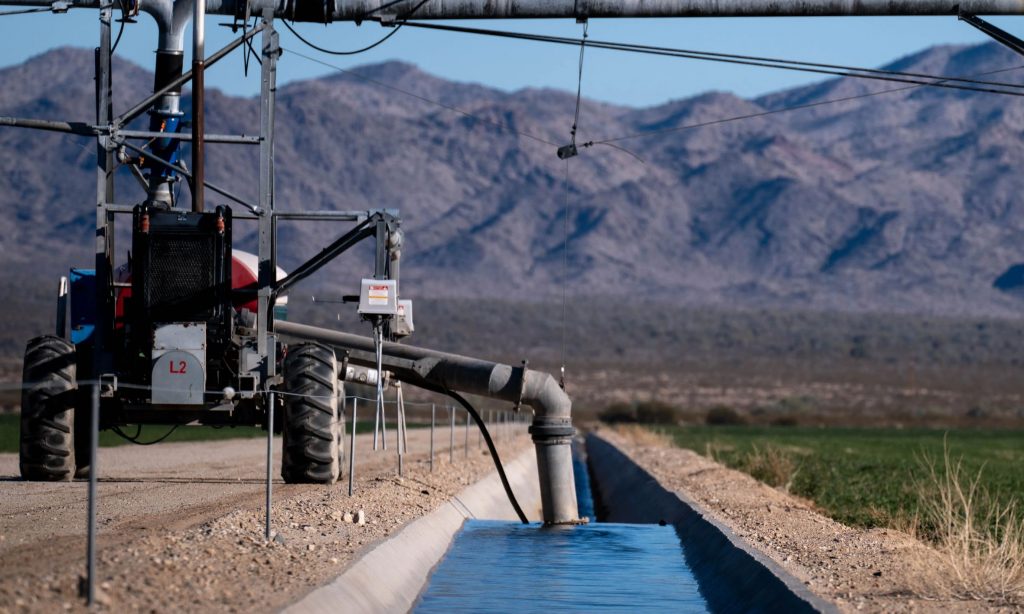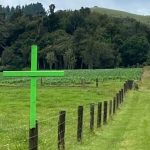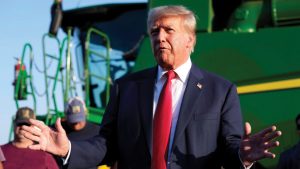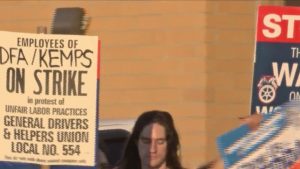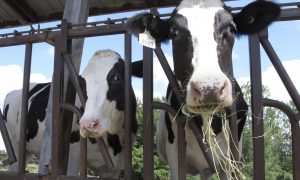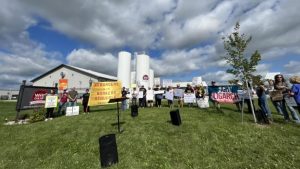
In August, Arizona’s attorney general called for an investigation into a 2015 sweetheart deal between the Saudi agribusiness company Fondomonte and the Arizona State Land Department, which had allowed Fondomonte to lease desert farmland west of Phoenix at one-sixth its market value and pump groundwater from Phoenix’s water reserves. Geographer Natalie Koch, a professor at Syracuse University who grew up in Arizona and studies the Arabian Peninsula, began researching the deal in 2018. In doing so, she discovered that the arrangement was not an anomaly, but rather part of a long history of collaboration between Arizona and the Arabian Peninsula. HCN spoke with Koch about her book Arid Empire, out this January from Verso Books, which delves into the conjoined history of the two desert landscapes.
High Country News: You open the book by talking about a double exposure: a slide with an image of a camel and a Coke advertisement layered on top of each other. Why did that strike you as symbolic of the relationship between Arizona and the Arabian Peninsula?
Natalie Koch: A double exposure — two images mapped onto one another — is understood as an error in developing a photo. But to me, the double-exposure image was something that helped to see the past and the present together.
When I started this project, I thought it was going to be about the (contemporary) Saudi-owned farm in Arizona. But I kept finding that there was a circular nature to the stories I was uncovering. I would start with a contemporary question, like the Saudi farm deal, and then immediately get looped back to its deeper history. So the double exposure is a way of thinking about that past and the present together — to be able to focus on both simultaneously.
HCN: Recently, there’s been a lot of uproar in Arizona about the Saudi farm you mention. How did a Saudi-owned farm end up in Arizona?
NK: The Saudi company that owns the farm, Fondomonte, is a subsidiary of a bigger dairy and agribusiness company called Almarai. Almarai has a number of international landholdings to source their grain for the massive dairy herds they have in Saudi Arabia; they’re now sourcing most of their grain from other parts of the world.
Part of what upset so many people in Arizona is that the farm is producing alfalfa, a hugely water -intensive crop. But Arizona has cultivated alfalfa for a long time, because in the desert you can get multiple harvests in a given year, as long as you have enough water. So for the Saudis, it was appealing for the same reason. The other farm that Fondomonte owns is in Blythe, California, not very far from the site outside of Phoenix.
I kept finding that there was a circular nature to the stories I was uncovering.
Arizona also has a deeper historical role. Almarai is headquartered in the very center of Saudi Arabia, just outside of Riyadh. The farming industry has been really important there since the 1930s, when King Ibn Saud wanted to develop it. The U.S. government sponsored a team of Arizona farmers to go over in 1942 to share their experience of growing alfalfa and all the water-extraction techniques they had mastered in Arizona.
Then it circled back: King Saud and his family made a royal visit to Arizona. They did this whole tour of Arizona agriculture and looked at the Arizona dairy industry. King Saud went back to Saudi Arabia and pushed to set up a dairy industry there. What we see now is the legacy of that. But it’s not the only connection between Arizona and the Arabian Peninsula.
HCN: Your book discusses the earlier role of the Arizona Experiment Station in the colonization of Arizona. High Country News has previously reported about “land-grab universities.” What is the role of the Arabian Peninsula in the University of Arizona and its agricultural efforts?
NK: The idea to create the University of Arizona began in the 1860s, but (the territory) didn’t have the money to start it. Then, the regents realized that there was new federal funding that was being given out through the (1887) Hatch Act, an add-on to the Morrill Act, (which created the land-grant universities), to establish university agriculture experiment stations. The regents figured out that they could get $15,000 to set up an agricultural station — just on paper — and use the money to help fund and start the university.
But eventually, they had to make the agricultural station legitimate. And the first directors thought along the lines of the camel promoters, looking to the Middle East: How do we colonize this desert we don’t know anything about? What are the crops that are productive and valuable in the Middle East? Arizona agriculture and boosterism had already been focusing on fruit production, so they did a survey of farmers around Arizona, and there was strong interest in date farming. So they got experimental date palms sent to Arizona. The first one came from Oman. And that eventually led to this big investment in agriculture that continues to this day at the University of Arizona. Like the story in the HCN article, the interest was helping Arizona farmers — not Indigenous farmers who had been doing irrigated agriculture in Arizona for centuries, but the white settler farmers who wanted to come to Arizona and be part of that colonization project.
It’s easy to forget how difficult it was for the U.S. government to take control of the territories we now call Arizona once they became part of the country.
HCN: Before these agricultural ex- changes, Arizona had other relationships to the Arabian Peninsula — including camels. Why did camels end up in Arizona?
NK: Camels came to Arizona in the mid-1800s. Jefferson Davis, who at the time was secretary of War, signed off on an expedition to go collect a bunch of different kinds of camels from across the Middle East and bring them back.
It’s easy to forget how difficult it was for the U.S. government to take control of the territories we now call Arizona once they became part of the country. The government — the Army and other branches — was trying to integrate these areas into the United States, but they didn’t know how you were supposed to establish state power in this place that not only doesn’t have roads, but also has a really difficult environment. So the idea was to import a bunch of camels that would carry the huge heavy loads that they needed to establish the military outposts in the Southwest.
Camels also figured prominently in biblical stories and the imagination of the desert as biblical. Even though nobody was personally familiar with them, they felt familiar in that religious sense, which helped in establishing state power — which was also a Christianizing project. So the camel promoters and the first directors of the experiment station were thinking on the same terms: How do we promote this desert that we don’t know anything about? And their thought process was to look to the Middle East.
